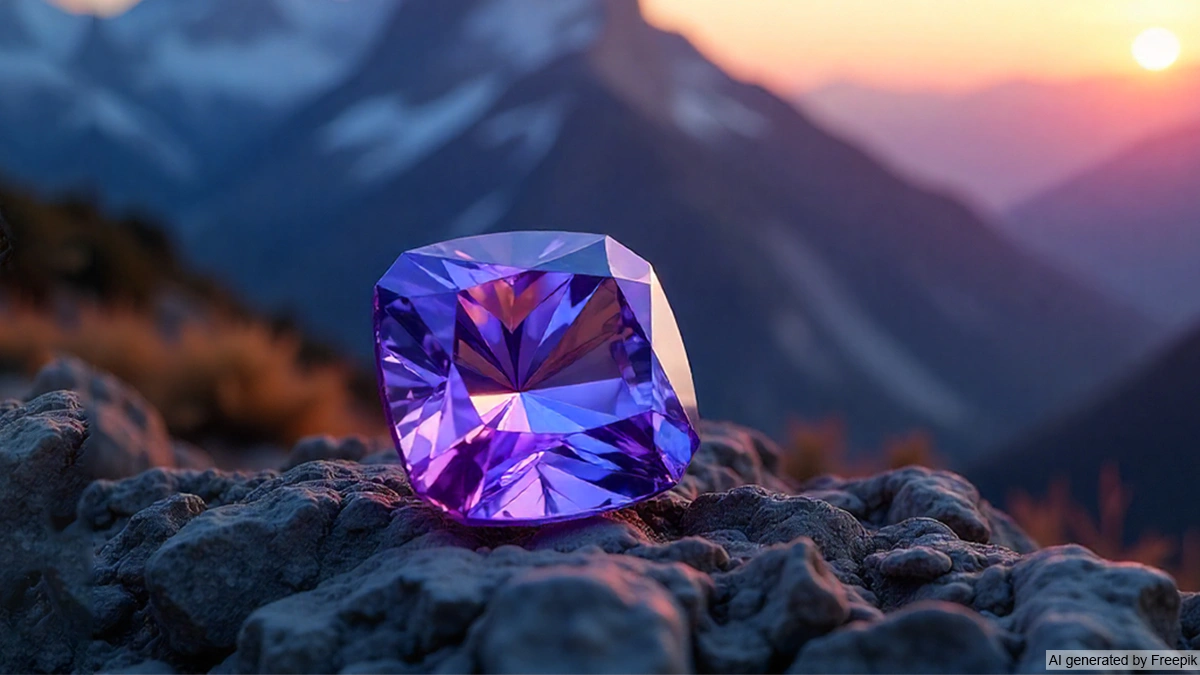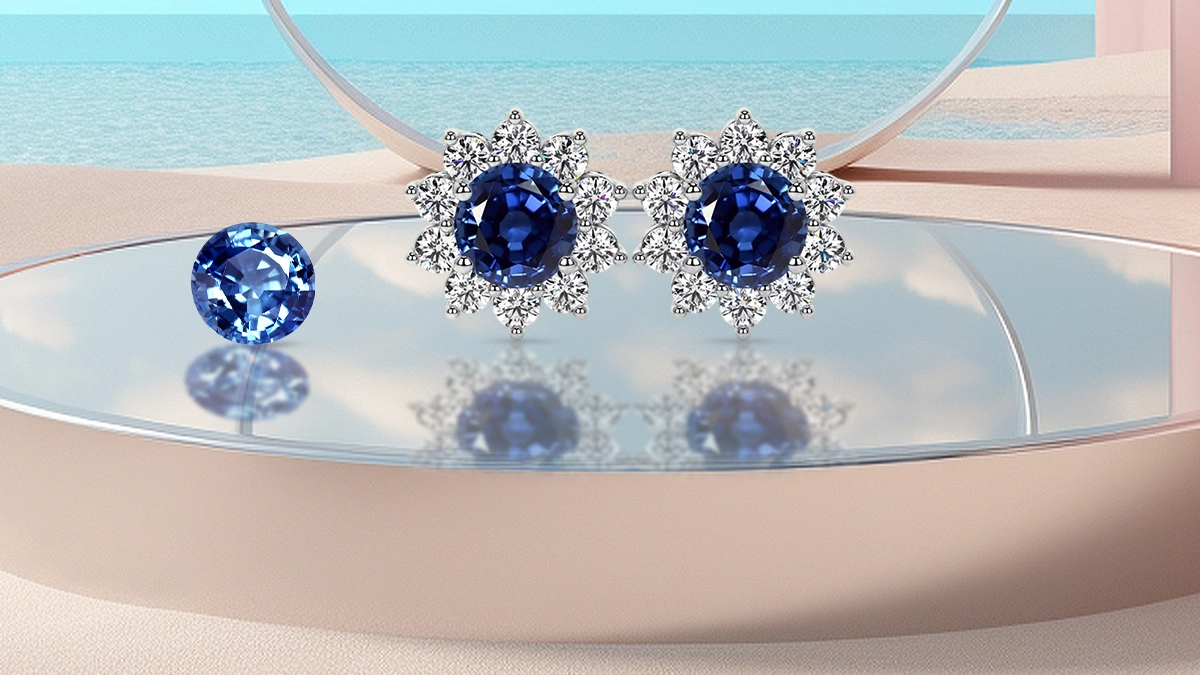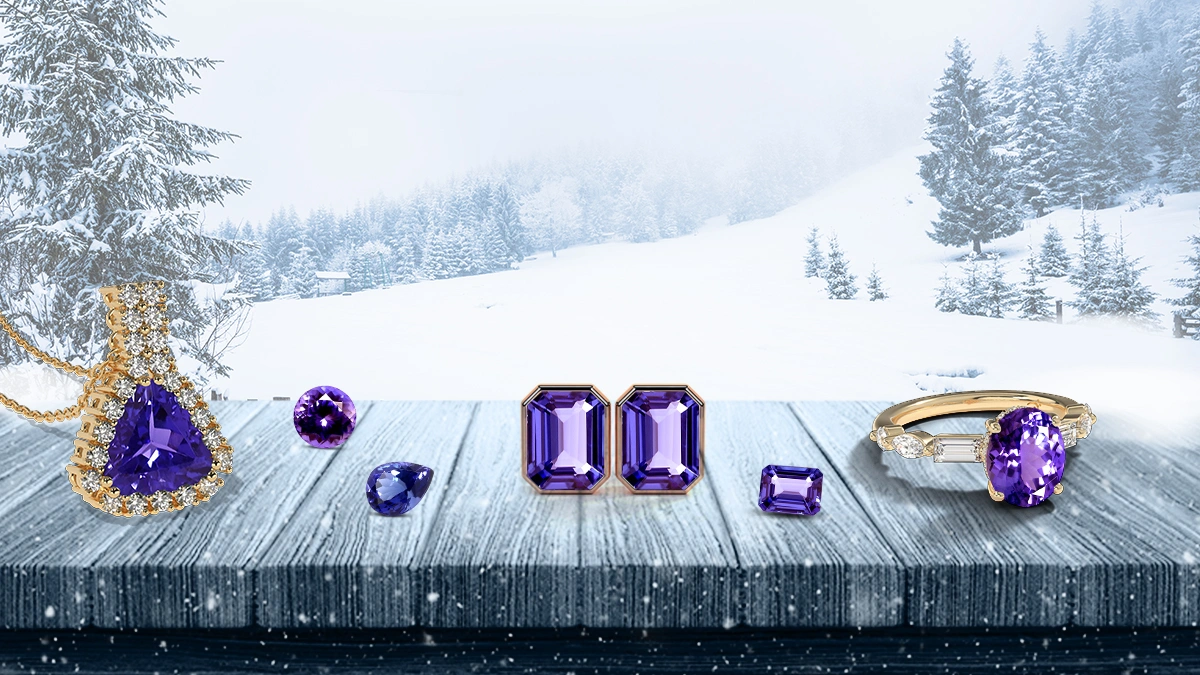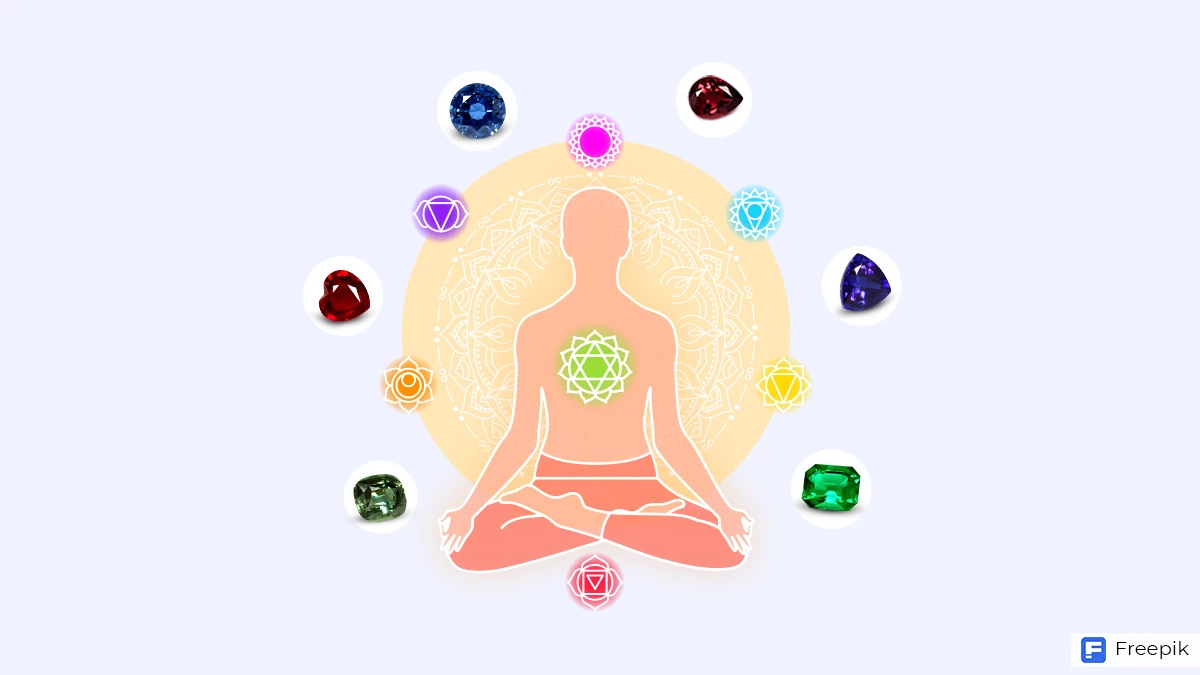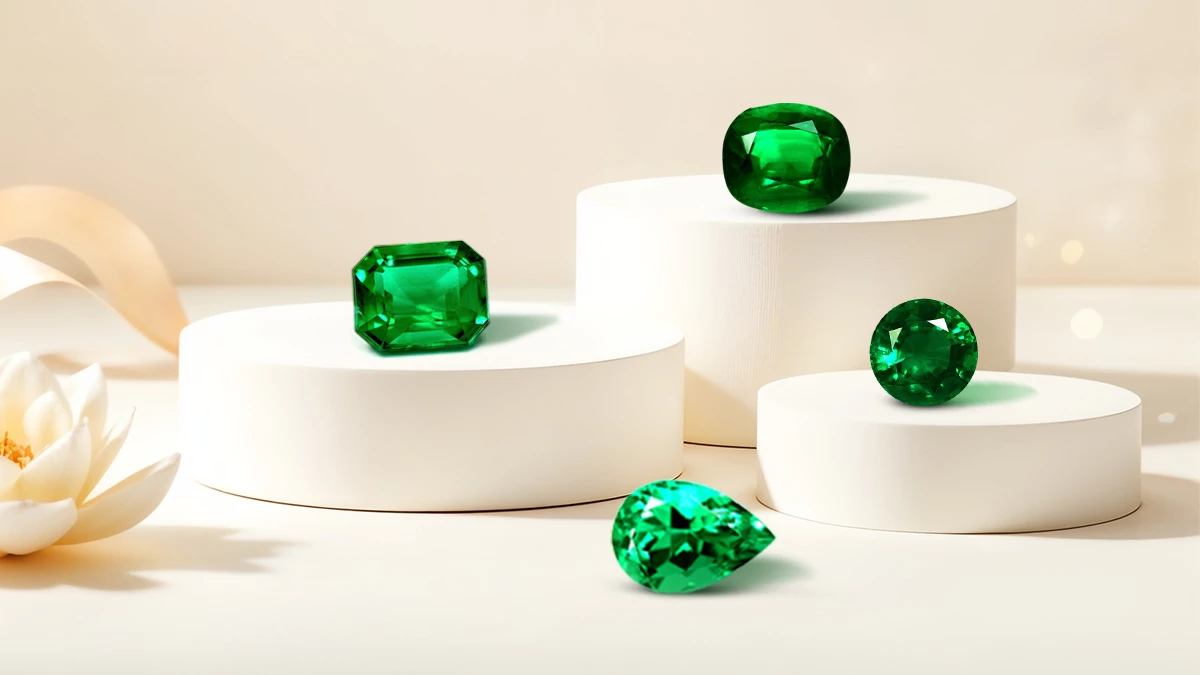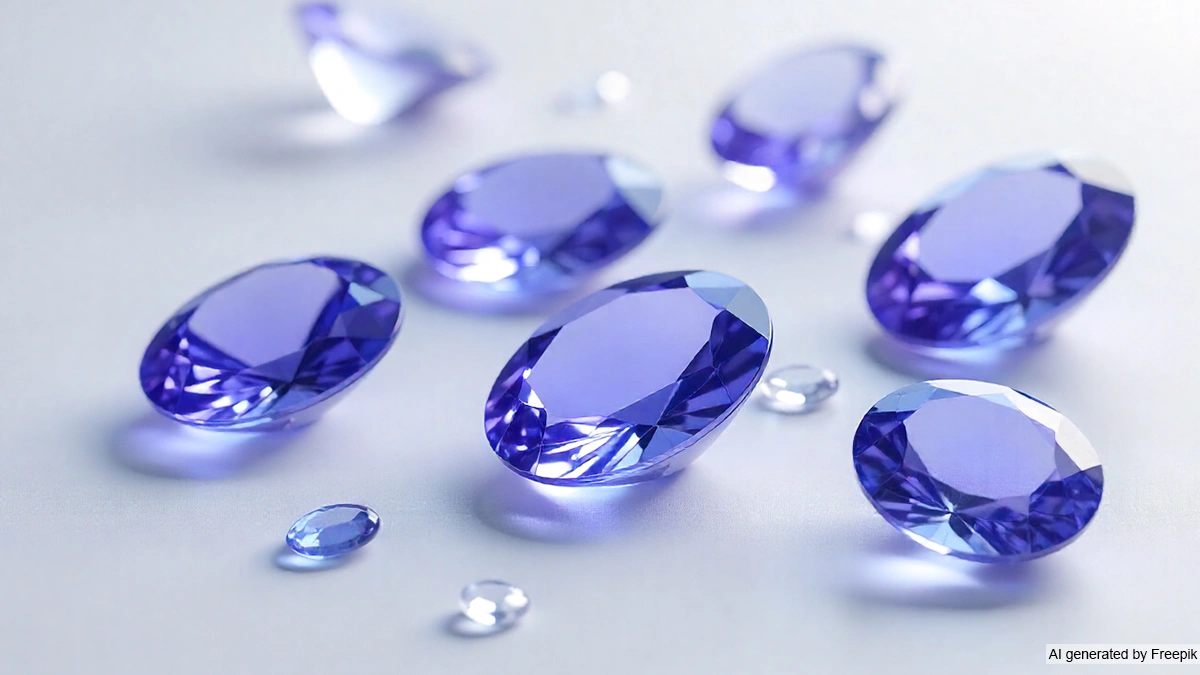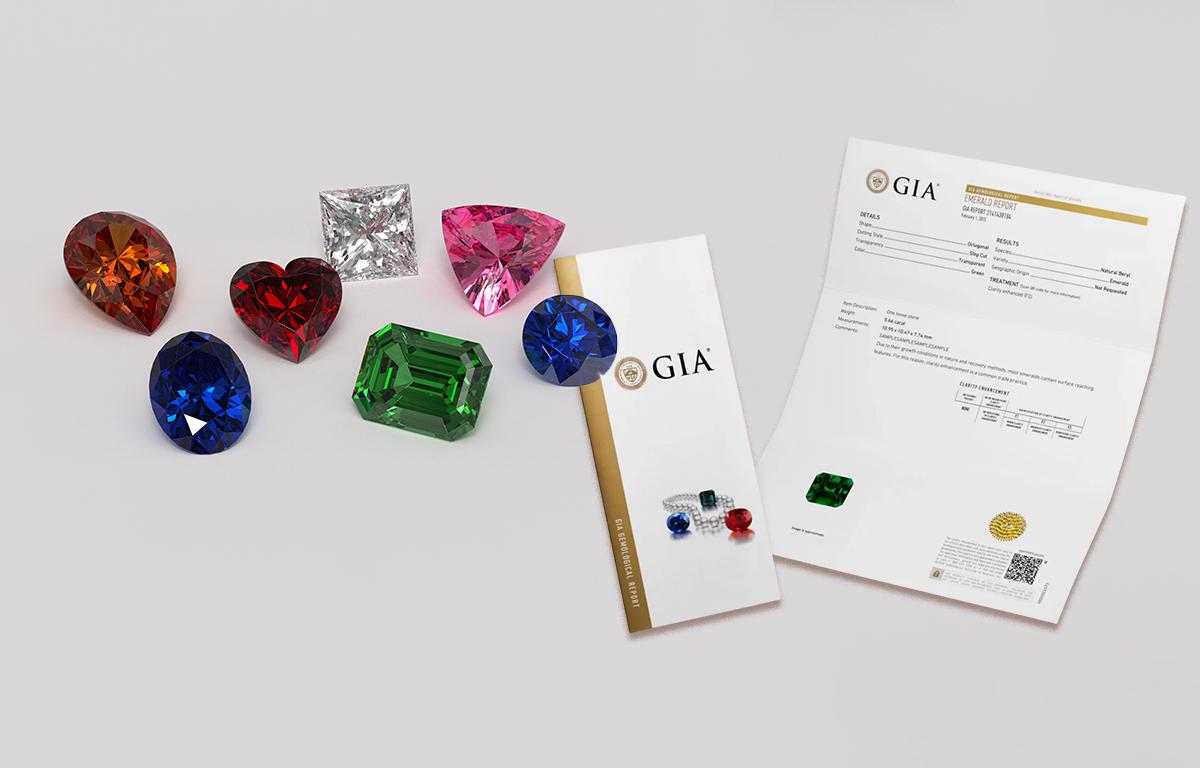What if the rarest blue gem in the world was born from the fire of lightning and guarded for millennia beneath Africa’s tallest peak? Tanzanite, the stunning jewel rarer than diamonds emerged from Earth’s hidden alchemy, where heat, pressure and vanadium fused in a delicate balance.
Found only in a four-kilometer strip at the foot of Mount Kilimanjaro, this gem echoes ancient folklore and the aura of a natural miracle. Step into its story, where science meets legend and discover how tanzanite became the jewel of transformation and eternity.
What Is Tanzanite?
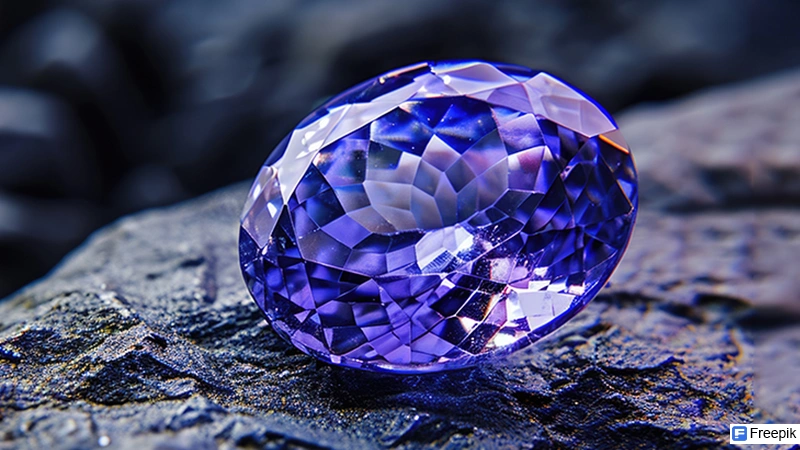
Tanzanite is a rare blue-to-violet variety of the mineral zoisite, enriched by traces of vanadium.
First discovered in 1967 in Tanzania, tanzanite quickly rose to international fame for its mesmerizing color and exclusivity. Unlike diamonds, rubies, or emeralds, which are mined in various parts of the world, it has a single-source origin, in the foothills of Mount Kilimanjaro. This makes it a finite, non-renewable resource. Geologists estimate that within the next couple of decades, the mines could be depleted, adding to the gem’s long-term value and mystique.
Its breathtaking hues range from sapphire-like blues to amethyst-like violets, often shifting with the angle of light. This unique optical effect, known as pleochroism, makes every tanzanite gemstone a living kaleidoscope of light and color.
Geological Formation of Tanzanite: Heat and Pressure
Nearly, 585 million years ago, in the foothills of Mount Kilimanjaro, Mother Nature gifted her most precious of all gems-Tanzanite. It remained undiscovered until 1967, when miners finally found it at its only source in Tanzania.
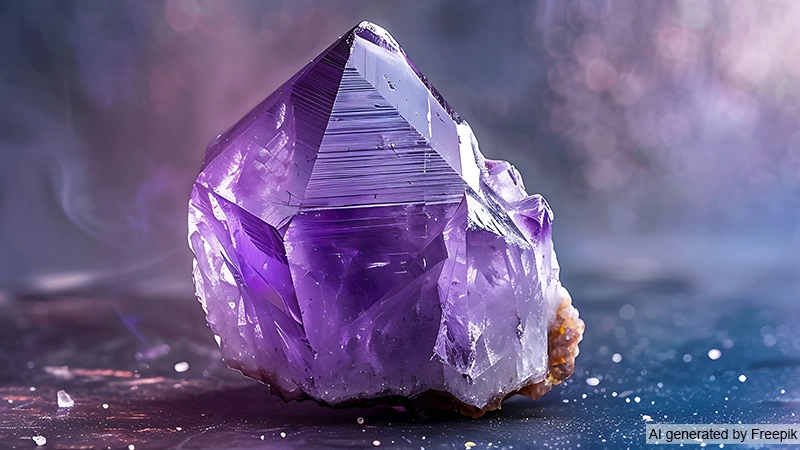
The Role of Tectonic Activity
Tectonic forces shaped the rare conditions that gave birth to tanzanite, making its origin as extraordinary as its beauty. This same process gave rise to Mount Kilimanjaro and the surrounding Mozambique Orogenic Belt, one of the most mineral-rich regions on Earth. During this process, immense heat and pressure transformed the Earth’s crust in a phenomenon known as regional metamorphism.
This process is quite fascinating. When tectonic plates collide, the igneous rocks (formed from cooled magma or lava) of each plate are forced together under extreme pressure. These rocks approach their melting point and in this near-liquid state, they crystallize into new structures. It is through this intense geological fusion that gemstones are born.

Why Only in Tanzania?
Each tectonic plate carries a unique set of minerals. When two collide, the specific mix of elements can give rise to crystals found nowhere else. In Tanzania, this rare collision created the perfect environment for tanzanite to form. This unique blend of heat, pressure and mineral composition has never been replicated anywhere else on Earth.
In fact, geologists believe that the conditions that produced tanzanite at the base of Mount Kilimanjaro were truly unique. The odds of such an event happening again are one in a million. This explains why tanzanite remains exclusive to this single location, further enhancing its allure as one of the world’s rarest gemstones.
A Legendary Discovery of Tanzanite
While the gemstone’s formation has been explained by science, its discovery is laced with legend and myth. Among the people of Tanzania, stories still circulate about its origin. According to the most popular tale, a powerful lightning strike set fire to the grassy plains at the base of Mount Kilimanjaro and formed tanzanite.
When the flames died down and the earth cooled, the dull brown stones lying in the scorched land had transformed into shimmering blue crystals. According to tradition, a group of Maasai herders wandering through this land were the first to notice the unusual brilliance of these stones.
Believing that the stone held spiritual significance, they spread word of the blue gem’s existence. Maasai thought that tanzanite heightens spiritual growth and symbolizes new beginnings, so they started gifting the stone to the newborn as a blessing.
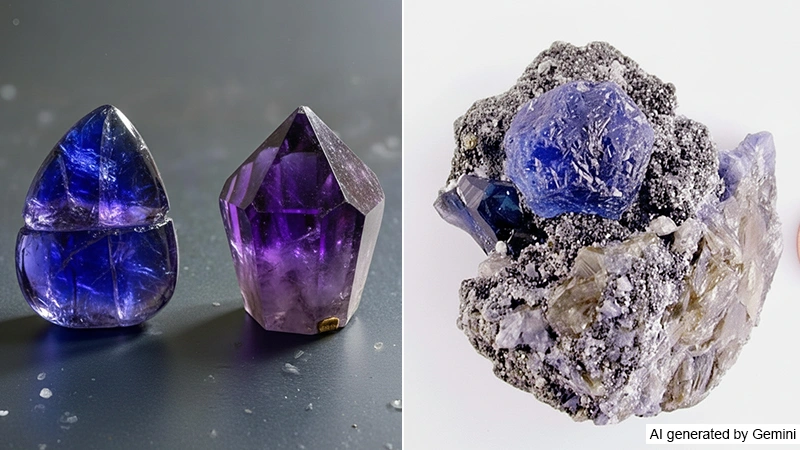
Beyond the myths, the official discovery of tanzanite is relatively recent. In 1967, near the Merelani Hills in northern Tanzania, when Maasai herders stumbled upon striking blue crystals, they brought them to local prospector Manuel D’Souza. He initially mistook these blue crystals for sapphires and was taken aback by their uniqueness.
He later presented gems to Tiffany & Co, the renowned New York jeweler who immediately realized their potential as a rival to sapphire. Originally they called it ‘blue zoisite’ after its mineral composition, but the name wasn’t sticky. So they came up with another market-friendly name that we know of today- Tanzanite.
To this day, tanzanite remains a single-location gemstone, making its discovery not just fascinating but also historically significant in the world of gemology.
The Role of Chemistry
Tanzanite is a variety of zoisite, a calcium aluminum silicate hydroxide with the formula Ca₂Al₃(SiO₄)(Si₂O₇)O(OH). However, Tanzanite contains additional elements that give it its distinct blue-violet color.
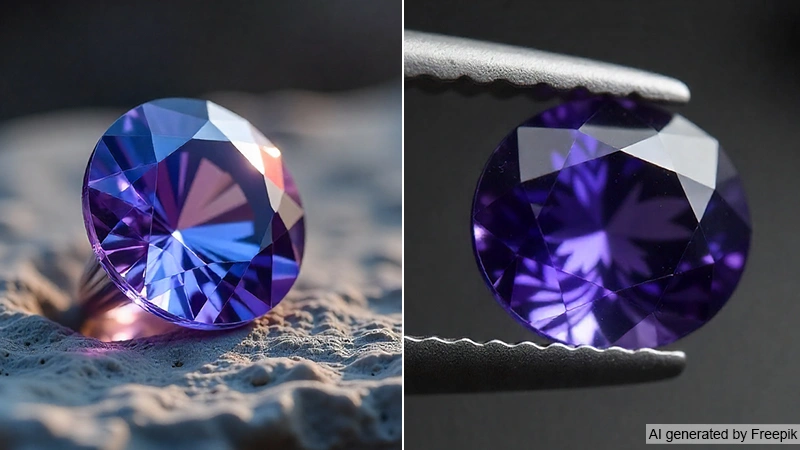
The blue coloration is primarily due to the presence of trace amounts of vanadium (V), while the violet color is attributed to the presence of chromium (Cr). This rare combination of elements occurs only in a limited pocket of Tanzania, where the right heat, pressure and minerals converge to form the gem
Understanding the presence of vanadium and chromium also allows gemologists to differentiate tanzanite among similar gemstones, making it a remarkable discovery in modern gemology.
Physical Properties
Color: Tanzanite is prized for its mesmerizing blue-violet hue, displaying shades that range from vibrant blue to deep violet. The intensity of this color greatly influences the gemstone’s value and desirability. It also exhibits trichroism, meaning it shows different colors—blue, violet and burgundy when viewed from varying angles.
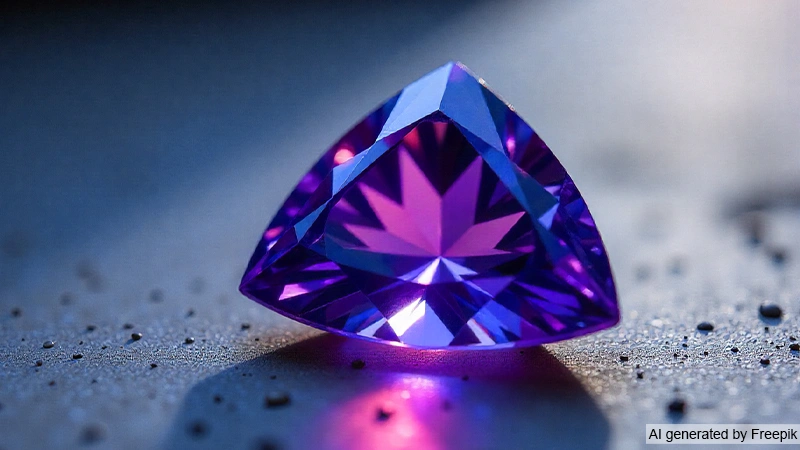
Clarity: Tanzanite often contains inclusions, which are natural internal features or tiny mineral crystals. While inclusions may affect transparency and overall appearance, stones with high clarity and minimal inclusions are more valuable.
Hardness: With a hardness of 6.5 to 7 on the Mohs scale, tanzanite is durable enough for jewelry but less resistant to scratches than diamonds or sapphires. Proper care and protection are essential to maintain its beauty.
Crystal Structure: Belonging to the orthorhombic crystal system, tanzanite typically forms prismatic crystals with well-defined facets that enhance its visual appeal.
Refractive Index: Ranging from 1.691 to 1.700, tanzanite’s refractive index determines how light bends through the stone. This contributes to its brilliance and overall radiance.
Cleavage: Tanzanite has good cleavage, meaning it can split along certain planes. Gem cutters must carefully account for this property during cutting and faceting to reduce the risk of fractures.
Luster: It possesses a vitreous luster, contributing to its brilliant appearance when polished.
Tanzanite Mining Area

The Tanzanian government split the tanzanite mines, a narrow strip along the Merelani hills, into four Blocks- A, B, C and D. Authorities awarded Blocks A and C to large operators and reserved Blocks B and D for local miners.
Block C is the largest and richest in gem-quality tanzanite. It uses modern techniques, yields the finest quality stones and follows more structured mining practices. Also, block C takes care of the working conditions and welfare of its employees.
Popular Tanzanite Jewelry Styles
Tanzanite jewelry styles exude modern elegance with a vibrant twist, making each piece truly stand out.

Tanzanite Engagement Rings: A Distinctive Choice for Couples
Tanzanite’s rare blue-violet hues symbolize deep emotions, making it a meaningful alternative to diamonds. Its versatility allows it to shine in solitaires, halos, or Art Deco designs, reflecting a couple’s individuality and commitment.
Tanzanite with Mixed Metals: A Modern Twist
Pairing tanzanite with yellow gold, rose gold, or platinum creates a bold, modern look. The gemstone’s rich color contrasts beautifully with different finishes, giving each piece a fresh, stylish edge.
Tanzanite in Statement Jewelry
Large tanzanite cuts in rings, pendants, or bracelets showcase its brilliance and pleochroism, shifting between blue, violet and purple.These bold designs make tanzanite the focal point of any outfit.

Tanzanite in Layered Jewelry
Tanzanite works perfectly for layering, whether stacking rings, mixing bracelets, or pairing delicate necklaces. Its versatility allows endless combinations with metals and other gems for a customized style.
Tanzanite Jewelry Gifts for December Birthday
If you’re celebrating a December birthday, tanzanite is an ideal gift. Its captivating blue-violet color is both timeless and striking, making it a standout in rings, earrings, or necklaces. For December-borns, wearing tanzanite not only adds elegance but also invites its positive energy, spiritual benefits and unique properties into everyday life.
Iconic Tanzanite Jewelry on Celebrities
There are several famous tanzanite jewelry pieces that have gained recognition for their beauty, craftsmanship and historical significance.
One notable example is the Queen of Kilimanjaro necklace designed by Michael Scott in 1988, featuring a 242-carat tanzanite centerpiece surrounded by over 100 carats of diamonds set in platinum. Additionally, the legendary Hollywood actress Elizabeth Taylor also adored the gem, owning a bold tanzanite ring that matched her iconic style.
Meanwhile, today celebrities continue to embrace tanzanite’s allure. Beyoncé was spotted wearing a stunning blue Tanzanite ring, speculated to be over 10 carats in a cushion cut, gifted by her husband Jay-Z.
Similarly, at a past Oscar award ceremony, Anne Hathaway dazzled in elegant tanzanite and diamond earrings. Cate Blanchett also graced the 2011 Oscars with this breathtaking tanzanite and diamond necklace. Countless other stars have similarly showcased the gem’s timeless charm on different events worldwide.
The Timeless Splendor of Tanzanite
Tanzanite isn’t just a gemstone, it’s a rare miracle of nature, confined to a single place on Earth. Its striking colors, rich symbolism and limited supply make it one of the most desirable gemstones of modern times. From birthdays and anniversaries to red-carpet moments, tanzanite jewelry brings elegance and meaning to every occasion.
Therefore, if you are ready to add this extraordinary gem to your collection, GemsNY offers an exceptional range of authentic tanzanite pieces. From elegant engagement rings to custom-designed masterpieces, GemsNY ensures unmatched craftsmanship, ethical sourcing and timeless beauty.
FAQ
It forms through unique geological processes involving heat, pressure and vanadium in the Merelani Hills region over millions of years.
Yes. Diamonds occur abundantly across the globe, but tanzanite exists in only one location on Earth. Besides, there are lab diamonds but there aren’t any lab tanzanites as such.
Tanzanite’s rarity comes from being mined exclusively near Mount Kilimanjaro in Tanzania, making it about 1,000 times rarer than diamonds. Its unique geological formation, combined with limited supply and increasing demand, ensures its rarity and value.
Tanzanite comes from a single location on Earth, the Merelani Hills near Mount Kilimanjaro in the Manyara Region of northern Tanzania.
Tanzanite forms through a rare combination of heat, pressure and vanadium. This unique gem occurs only in the Merelani Hills near Mount Kilimanjaro. These unique conditions created the perfect environment for tanzanite’s formation, which does not exist anywhere else on Earth.
Yes, experts believe the mines could deplete within a few decades, which adds urgency to owning this gem.
Value depends on color, clarity, cut and size. Vivid blue-violet stones are the most valuable. The price range starts roughly from $150 per carat and goes up to approx $2000 per carat at GemsNY. Here you will find stones ranging from under 1 carat to nearly 50 carat providing choices for both delicate designs and bold styles.
Tanzanite ranks around 6.5 on the Mohs scale, making it softer than sapphires and diamonds. It’s best for occasional wear or protected settings.
Its signature blue-violet color is rather uncommon, which is due to vanadium impurities. Also due to its trichroic nature, it shows different colors from different angles.
Wearing tanzanite is believed to bring calmness, balance and spiritual growth. Many also associate it with enhanced intuition and emotional healing, while its vibrant blue-violet color adds elegance and sophistication to any jewelry piece.
Reputed jewelers like GemsNY provide genuine tanzanite with proper certification. Check out GemsNY reviews and GemsNY press to witness their goodwill firsthand.

